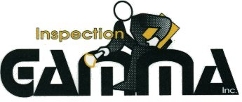PLUMBING
Plumbing installations are expected to last at least 40 years. Since every plumbing component must meet specific standards, it is recommended to seek the services of a professional plumber or information from reliable sources before proceeding with any plumbing project. Remember this: an improvised plumber is a guarantee of unwanted leaks!
Sanitary installation
There are four elements to every plumbing system:
- Fixtures (faucets, sinks, tub, water heater, etc.)
- Water supply – this includes connection to the public network and piping
- Wastewater disposal
- Ventilation of wastewater system components
There are various types of pipes available on the market:
- Rigid plastic pipes (PEX, PVC, CPVC, ABS, Poly-B)
- Rigid copper pipes
- Flexible copper pipes
- Cast-iron pipes
Important
- Poly-B Pipes – These plastic pipes are commonly grey, sometimes black in color. They are known to react to chlorine content in drinking water and to deteriorate, thus causing pipes and fittings start to leak. About a hundred cases in Quebec were reported on a CBC program. Poly-B is employed for drinking water supply plumbing and hot water radiant heating.
- Carlon Pipes (water supply) – This type of pipe is made of plastic and black in color. It is strictly suitable for outdoor installations. If used indoor or for hot water supply, the fittings used for those pipes can break and cause major damage.
- Steel pipes – Commonly used six decades ago, steel pipes should be entirely replaced by copper or plastic pipes, because they clog over years and can cause major damage.
- ** IMPORTANT: Never connect steel pipes and copper pipes together, because an electro-chemical reaction could cause them to corrode quickly.
Call a plumber that hold a permit of Régie du bâtiment du Québec, and make sure he his member of the Corporation des maîtres mécaniciens en tuyauterie du Québec (CMMTQ).
Hot-water heaters
Domestic hot-water heaters can be powered by electricity, gas or fuel oil. Most tanks will last 7 to 12 years. If yours was installed 13 years ago, you should start thinking about replacing it before it fails and leaks.
- Natural gas powered hot-water heaters – Check for any gas odor near the tank.
- Fuel oil powered hot-water heaters – Check for any pipe leaks between the fuel tank and the heater.
- Any storage-type service water heater must be designed with an end valve and a pressure and temperature safety valve. The safety valve must be fitted with a discharge line extending to less than 12 inches (300 mm) from the floor or any other safe place.
- Quebec Electricity Code Instructions:
- Connection of the bonding conductor – Attach bonding conductor with the screw provided in the water heater connection compartment.
- Installation of hot-water heater – Install the hot-water heater in such manner as to permit access to covers for maintenance purposes.
- Hot water heater power supply – The water heater must be supplied by a derivation provided for that purpose.
A few plumbing terms
- French drain
- Area drain
- P-Trap
- Cleanout
- Reflux valve
- Catch basin
- Sump pump
- Venting pipe
French drain – Intercepts and evacuates groundwater to avoid water infiltration in the basement.
Area drain (floor drain) – Usually located in washrooms of commercial buildings. Are sometimes found in residential basement bathrooms or near hot-water tanks. To prevent U-traps from drying out, pour a little water in the area drain twice a year.
P-Trap – To avoid sewage smells in your house, fixture drains are fitted with U-traps. The water seal of the trap prevents the flow of foul air. To prevent traps from drying out, pour a little water in the area drain twice a year.
Cleanout – Consists in an opening fitted with a removable plug for drainage network maintenance and testing.
Reflux valve – Also called non-return valve, the reflux valve is a device for preventing sewage or drainage water from flowing back into the basement in the event of sewer blockage. It closes automatically when sewage water flows back. Absence or malfunction of the reflux valve can cause serious damage when heavy rains occur.
Sump pump – Sump installations include a sump, a pump and a drainage pipe. The sump is fitted in the basement floor and collects foundation drain water. The pump pushes the water away via the drainage pipe.
